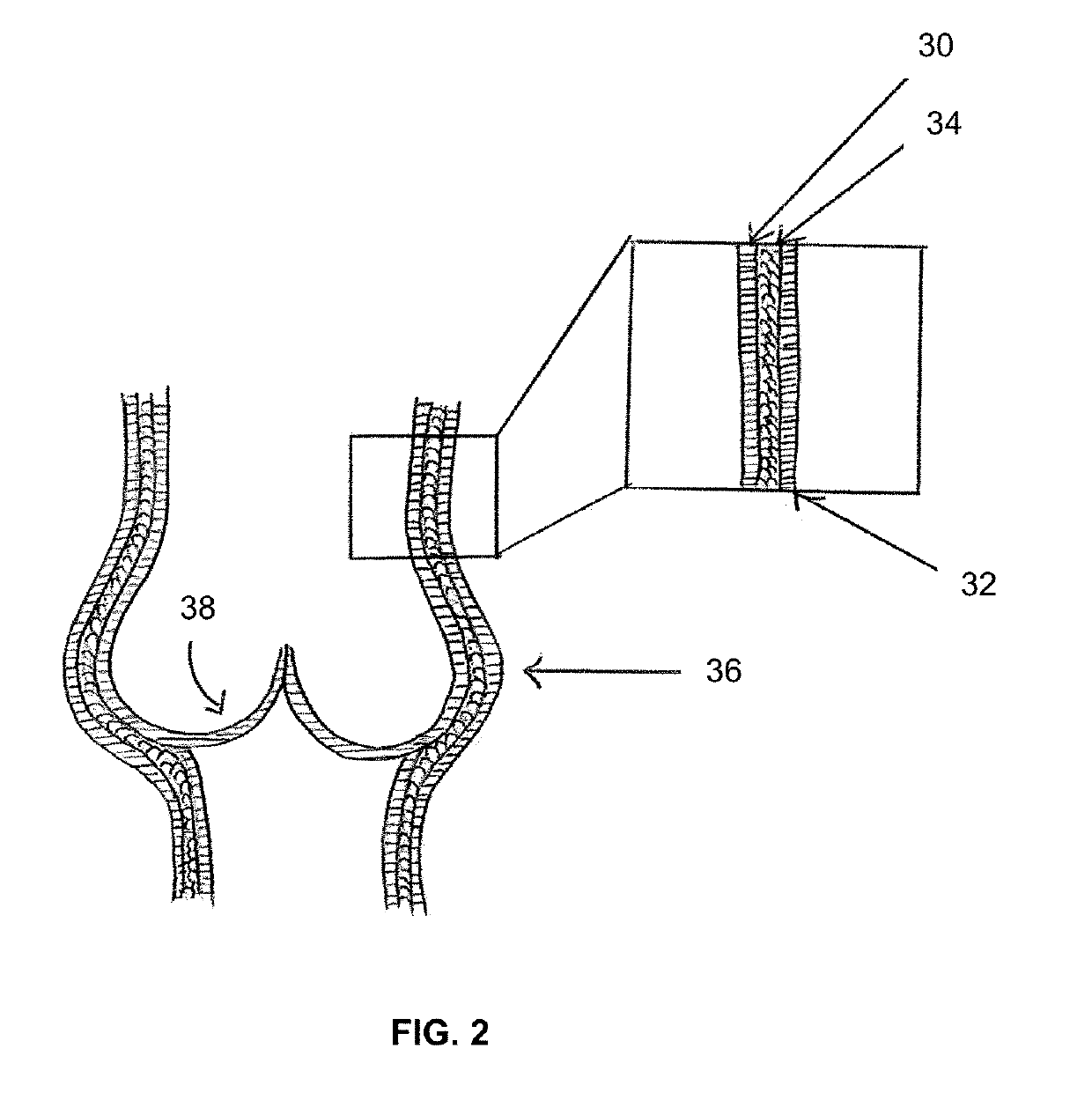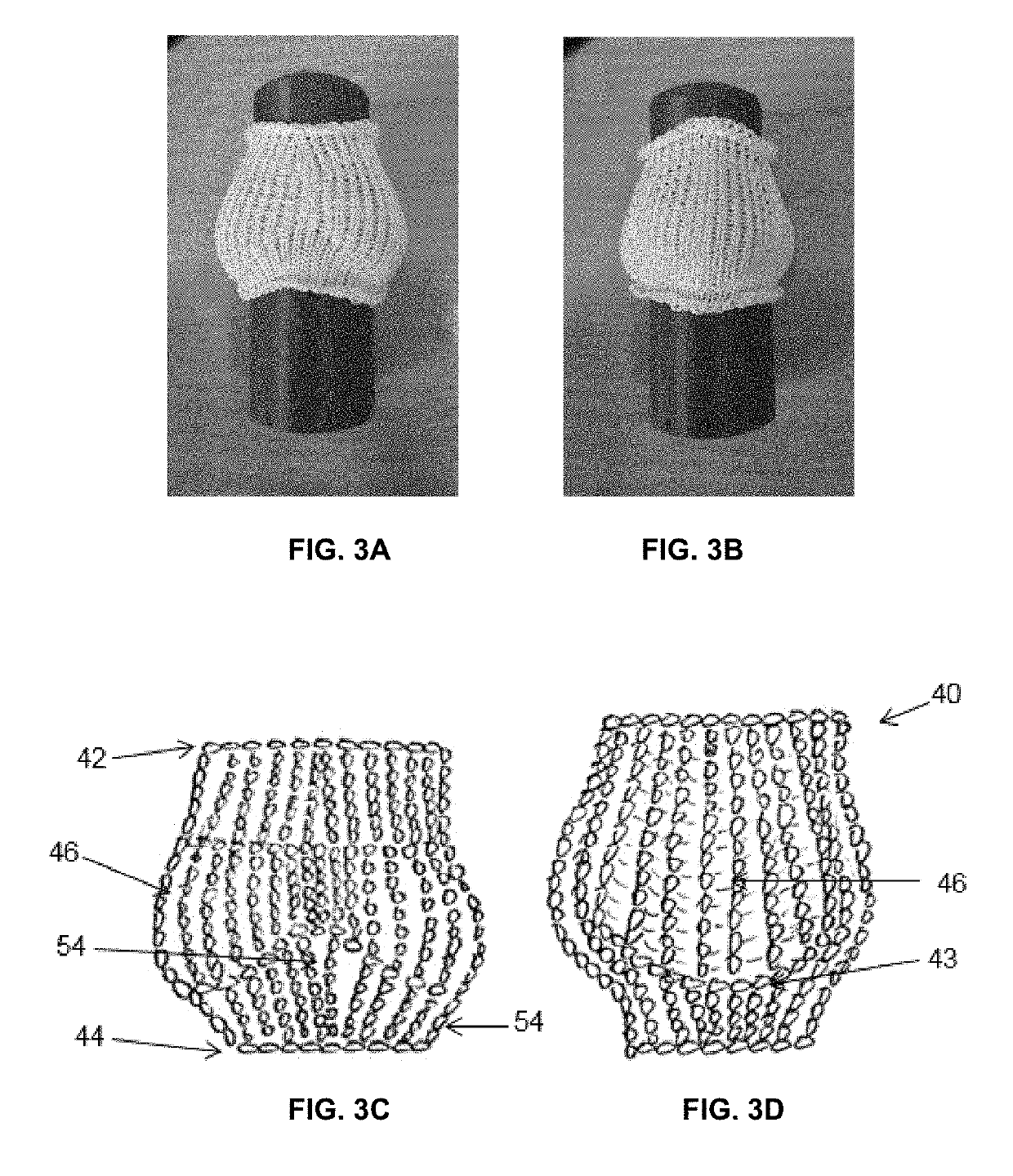Expandable aortic or pulmonary root
a pulmonary root and expandable technology, applied in the field of expandable aortic or pulmonary root, can solve the problems of calcification, degeneration, degeneration, etc., and achieve the effects of reducing the risk of heart valve disease, and improving the quality of li
- Summary
- Abstract
- Description
- Claims
- Application Information
AI Technical Summary
Benefits of technology
Problems solved by technology
Method used
Image
Examples
example 1
[0172]A synthetic aortic root is prepared using the following method:
[0173]1) Using a dissolvable polymer such as PVA, 3D printing is used to create a mould unit A that mimics one sinus, one valve leaflet (cusp) and one third of an ascending artery, as according to a scanned image from a patient;
[0174]2) A nanofiber layer is formed on mould unit A by jet spraying a polymer solution (e.g. PCL) so as to deposit nanofibers onto the first mould unit while the first mould unit rotates at speed of 10 m / s to 50 m / s. This provides different degrees of alignment of the nanofiber, thus mimicking the anisotropic property of the valve leaflet;
[0175]3) Three individual units of nanofiber-coated mould unit A are assembled onto a 3D-printed dissolvable holder together with a single mould unit B, which mimics part of the extending artery, and a single mould unit C, which mimics the extension from the sinuses, thereby forming a complete mould having three cusps, three sinuses and the ascending arter...
example 2
[0181]A knitted support for a synthetic aortic or pulmonary root can be prepared using the following protocol:
[0182]A commercial Stoll CMS 16gg dubied, flat double bed knitting machine is used with 220 dtex PCL yarn. The pattern is designed using software M1plus. M1plus® pattern software from Stoll is the most effective solution for producing patterns for a highly-optimized knitting process. The programme suggests a knitting order for the knitting and transfer rows and these can be changed in the arrangement editor. A number of needles and rows are selected. The pattern is created in the design mode. Specific stitch types are chosen and allocated positions in selected areas.
[0183]A jersey knit pattern chosen for optimal shaping. A 1 & 1 set-up seed—tuck-gore is used for starting and ending the knit. Different tensions assigned to specific regions corresponding to the anatomical regions of the root. In an embodiment, the sewing ring has a specified tension. The sinus regions have mor...
PUM
 Login to View More
Login to View More Abstract
Description
Claims
Application Information
 Login to View More
Login to View More - R&D
- Intellectual Property
- Life Sciences
- Materials
- Tech Scout
- Unparalleled Data Quality
- Higher Quality Content
- 60% Fewer Hallucinations
Browse by: Latest US Patents, China's latest patents, Technical Efficacy Thesaurus, Application Domain, Technology Topic, Popular Technical Reports.
© 2025 PatSnap. All rights reserved.Legal|Privacy policy|Modern Slavery Act Transparency Statement|Sitemap|About US| Contact US: help@patsnap.com



